





The Sydney Harbour Bridge, so long a dream is today a bold and practical reality. A triumphant arch of steel, humanising our landscape in the ideals of all true Australians. A work of service, a thing of beauty, which asserts itself long after we are gone.
The Sydney Harbour Bridge is an engineering icon, instantly recognisable, and synonymous with its city around the world.
The journey to build the Bridge would take over a century to complete, and it would stretch its city’s resources to breaking point. In the end it would unite Sydney as a global city, but at many points along the way, it was a dream that was almost never realised.
The construction of the Sydney Harbour Bridge was a story of tumult and triumph. This five-part series traces the journey of this enormous undertaking and tells the story of the people who made the Sydney Harbour Bridge a reality. It was a public works feat that made it a modern marvel of its time.
The bridge is such a part of the city that it’s hard to imagine a time before it was there.
In the early days of the colony that would become Sydney, there was already public pressure for a permanent crossing that would link the north and south sides of the city across its great natural harbour.
But another group of people were crossing the harbour long before white settlement.
Theirs was a canoe culture and the waters of Port Jackson were their true highways. The English ships would change their lives forever.
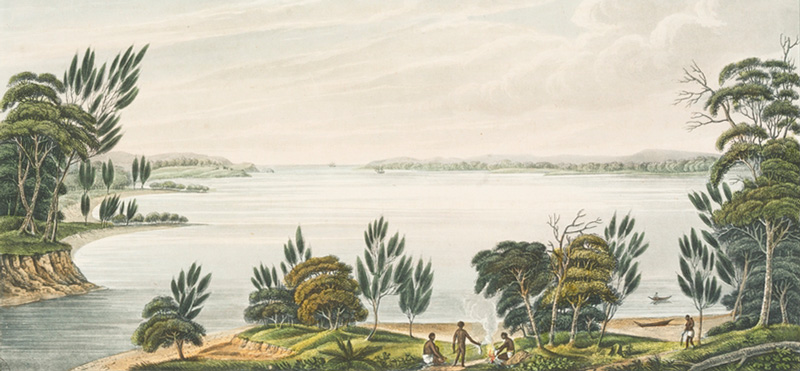
This is a story of the Eora, created through a close and innovative interrogation of the European records of early colonisation. Compiled from letters, maps, prints, books and drawings, we can piece together a surprisingly rich account of Aboriginal lives and families after contact. Running contrary to the notion that colonisation completely displaced Aboriginal people, this account gives testimony to a continuing Indigenous presence in Sydney.
Read the Eora storyThe harbour peoples of the Eora Nation, lived with an abundance of fish and established trading routes along which they travelled in carved wooden canoes, called nawi. Nawi reached up to four metres long and one metre wide, large enough for a fire to be kept burning in their centre. Men fished with spears, women with hand-lines and lures.
In a fleet of eleven tall, masted ships, the British entered Port Jackson, New South Wales, bringing with them roughly 1500 British citizens. Half were convicts; the others were marines, seamen, civil officers and free people. Accompanied by a large store of supplies, it was there in Sydney Cove that Governor Arthur Phillip chose as the site of the first British outpost and convict colony in Australia.
Having passed between the capes which form its entrance we found ourselves in a port superior in extent and excellency to all we had seen before… enjoying the luxuriant prospect of its shores covered with trees to the water’s edge.
The natural grandeur of the harbour evoked rapturous visions in those who saw it for the first time.
In 1789, a year into the life of the colony, the natural philosopher Erasmus Darwin had arrived in Sydney Cove and was taken by the sight of the bay. Upon seeing the bay, he wrote a poem, Visit of Hope to Sydney Cove, which hinted uncannily at the city’s future and the great Bridge that would eventually join the land on either side of the body of water:
There shall broad streets their stately walls extend, The circus widen, and the crescent bend; There, ray’d from cities o’er the cultur’d land, Shall bright canals, and solid roads expand. — There the proud arch, Colossus-like, bestride…
When the British first arrived in 1788, almost 8000 Indigenous people were living in the greater area of what had now been named Sydney by the British. But within just two years, only one thousand would remain.
Over the next twenty years the white population would grow to 10,000 as the nascent city expanded, rapidly encroaching on and erasing the Eora Nation in its wake. Still, many Indigenous people continued to travel through, trade and live in the area that came to be known as Sydney. By the 1820s Sydney’s population had exploded, swelled by continual arrivals coming by sea. The colonial settlement on the south side of the harbour expanded into the growing Sydney basin, and the settlement on the north shore took root.
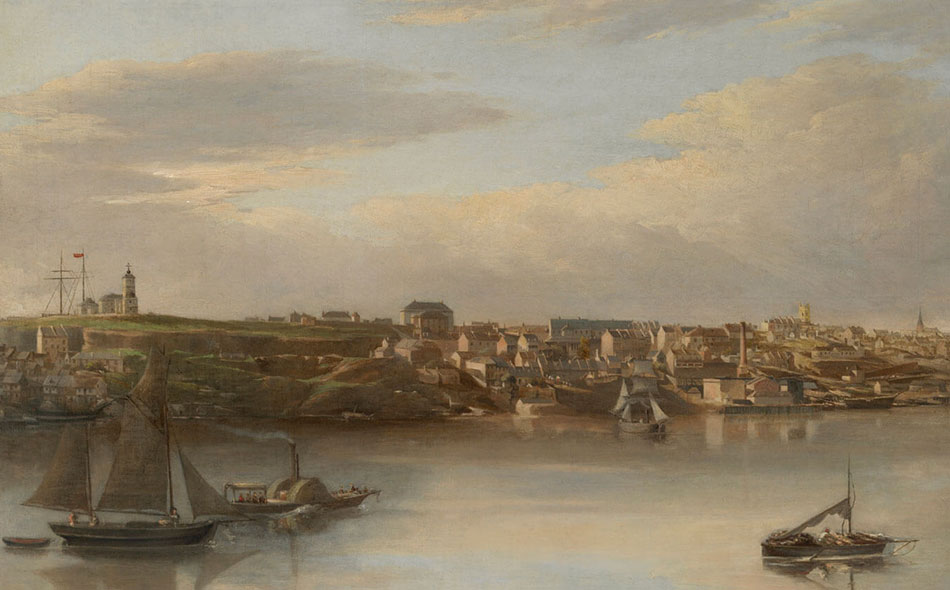
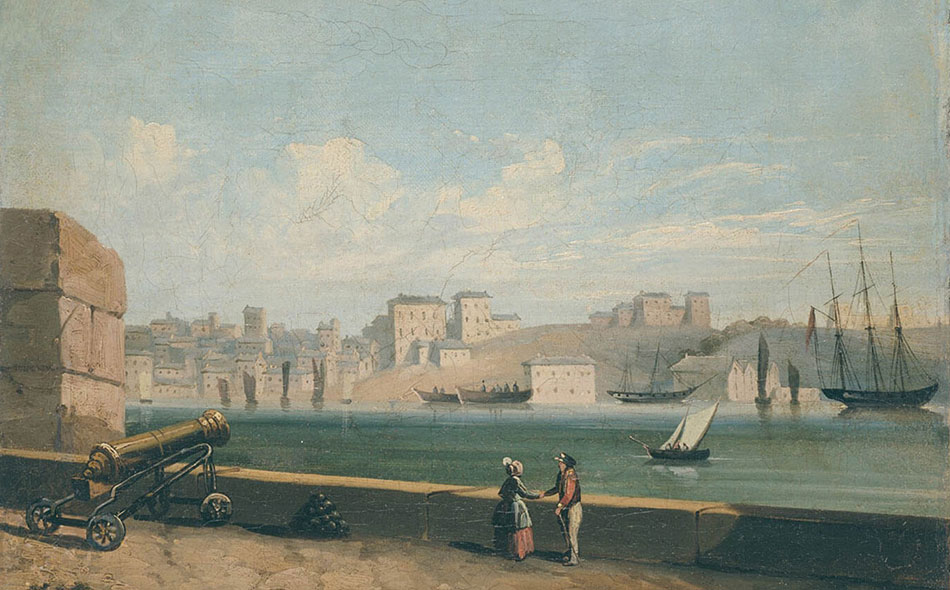
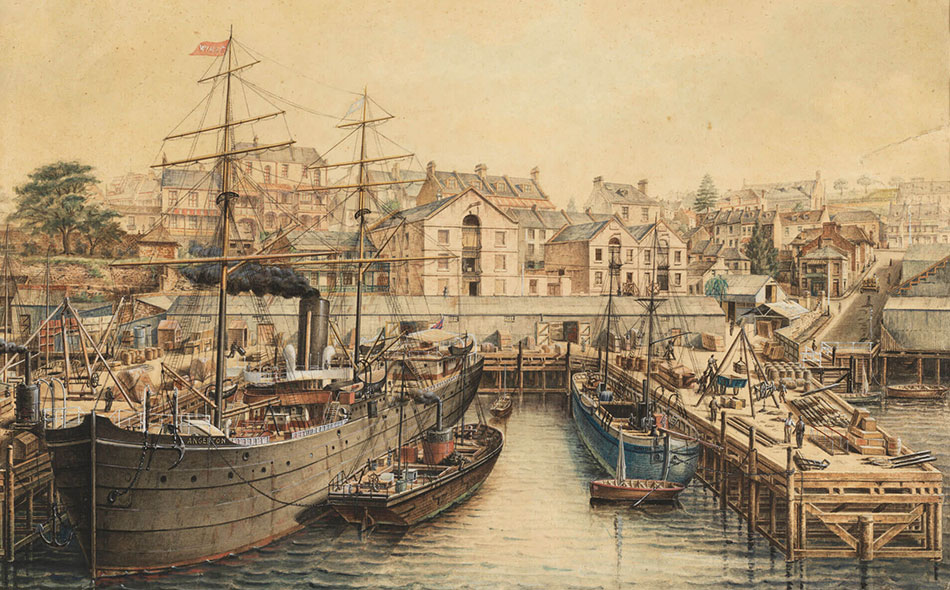
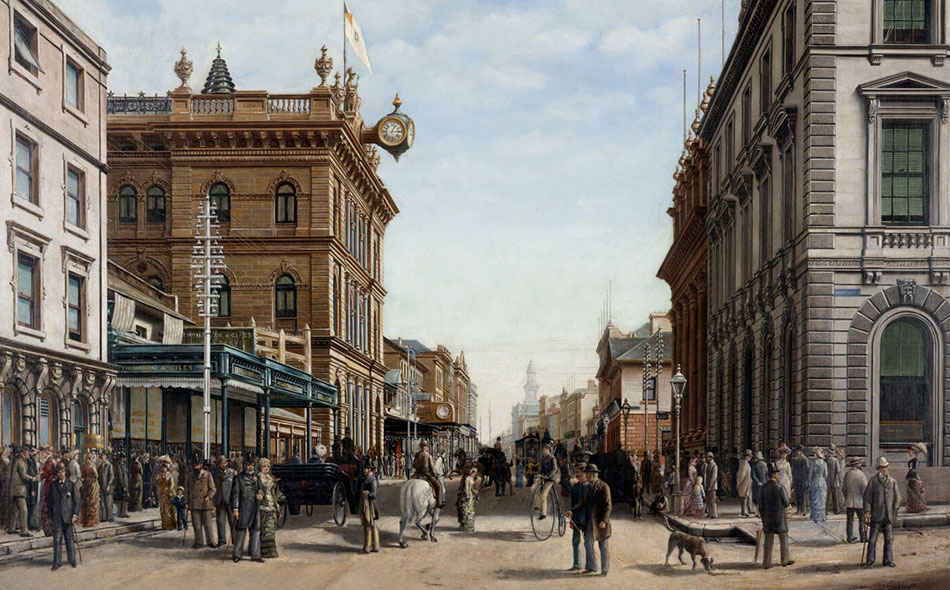
At this time, before even the idea of the construction of a harbour bridge, the only ways to cross the water was to go by boat—a sometimes treacherous undertaking—or to go the long way around, a journey that could take the better part of a day.
The question of how to solve this vexing transport issue provided a fertile opportunity for the more ambitious business people of the new city. Competition soon emerged in the increasingly crowded harbour.
In 1813, an enterprising former convict, Billy Blue, established the very first public ferry service upon completing his sentence in Sydney, running a route from Blues Point (named for himself) to Dawes Point.
His passengers apparently generally did the rowing from Dawes Point to Blues Point, they would pay him for the return journey, he always carried a sack on his shoulder and wheedled people for food, beer or clothing.
The success of this business venture would bring Blue great wealth, and he was given land on the North Shore by Governor Macquarie, who had dubbed Blue ‘The Old Commodore’.
In 1861 the Sydney Ferry Company was established and ran the first commercial ferry service between Circular Quay and Kirribilli.
Sydney Ferries Limited also joined the growing water-transit system and ran services between Neutral Bay and Mosman, and established a tradition of naming their vessels after prominent members of the Indigenous community — Bungaree, Bennelong and Barangaroo.
The ferries moved everything—not just people, but vehicles and horsemen. As Ruth Park described in her book, The Companion Guide to Sydney, “The ferries are very cosy, like domesticated elephants.”
By 1890 more than 5 million passengers, 3.5 million vehicles and almost 45,000 horsemen were crossing the harbour each year, in an often chaotic and increasingly dangerous choreography of movement that kept the city turning.
The Australian writer Christina Stead captured this scene in her novel, Seven Poor Men of Sydney:
The ferries flock into Circular Quay each morning at eight and nine o’clock. The people burst out of the turnstiles in streams which go twisting uptown through the narrow streets. Some walk in the cool and some choose the sun. The office-boys in worn school jackets, the clerks in unpressed slop suits, the girls in light blouses and thin floating dresses, are already sweating and flushing with the heat.
“The thing was with all these ferries up until war time, the men would stand on the side, they stand up on the railing, the ferry would have a terrific lift as it got into the wharf (laughs). It’s a wonder it didn’t go over.”
— Lydia Bubbles Rowe
By the 1900s Sydney had become the busiest port city in Australia.
In these years at peak hour up to 75 ferries would be docked at any one time, taking 13 million passengers a year back and forth across the harbour. Services now ran to Balmain, along the Parramatta River and to the Eastern Suburbs. By 1927, the number of passengers had jumped to 27 million a year, and overcrowding made these journeys increasingly dangerous for commuters.
![Neutral Bay, Sydney Harbour [showing paddle wheel ferry and sailing ship] Call Number, PXE 711/84](/assets/images/episodes/1/15.5-a116084h-wide.jpg)
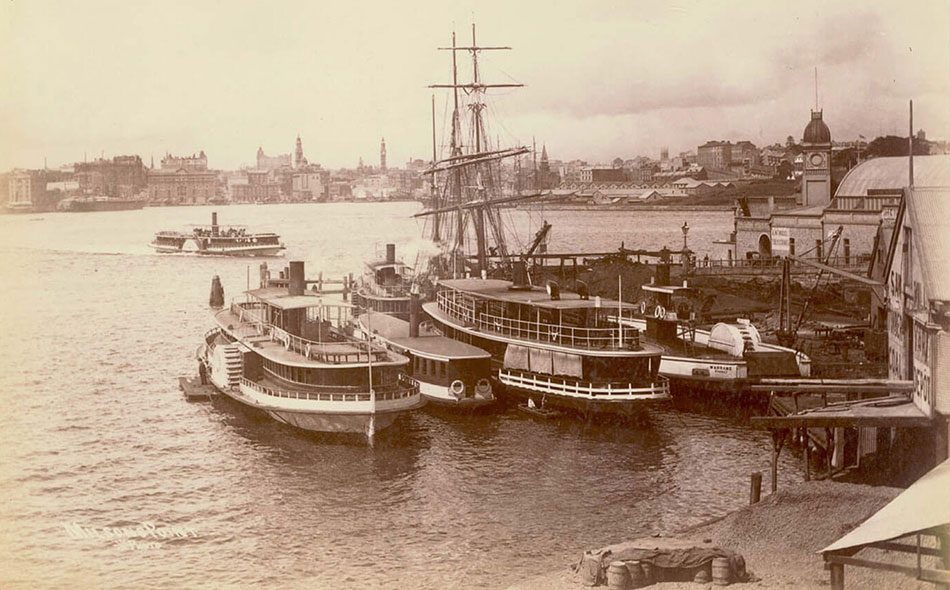
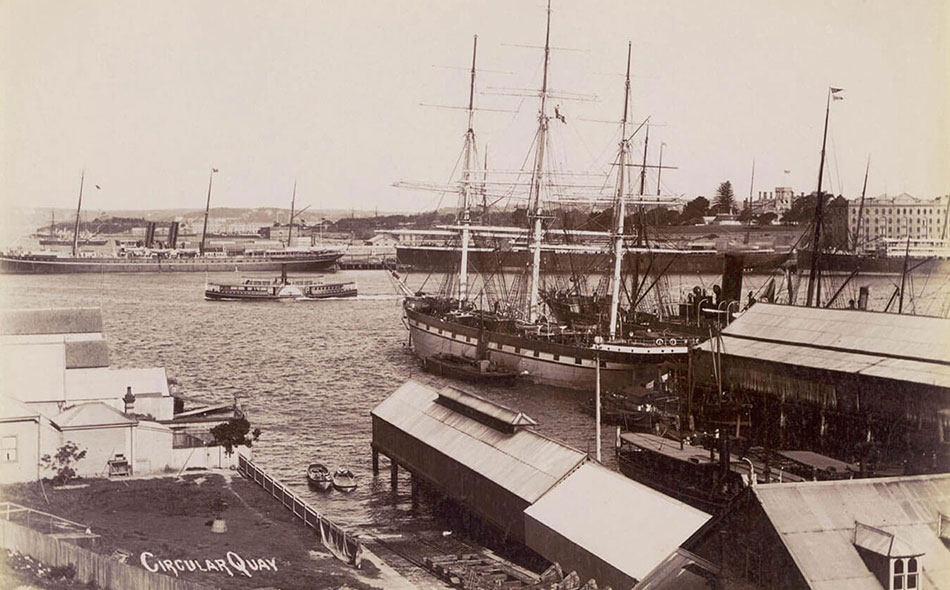

The ferry operators, each running a very healthy business, were vocally opposed to the idea of such a bridge that might lure away their loyal customers. To them it seemed both undesirable and impossible to build a crossing across the harbour.
As the city grew, bridges of more modest length were built to ease the burden on the ferry crowds, and to get from one side of the harbour to the other was known as the journey of the five bridges involving crossings at Pyrmont, Glebe Island, Iron Cove, Gladesville and Fig Tree. This was hardly an efficient way to cross the ever-growing city.
The idea of a bridge big enough to cross the harbour seemed fanciful to most people living in Sydney, an undertaking beyond the resources of the fledgling city.
Plans for an engineering centrepiece grew in the minds of some of the most ambitious town planners and engineers in the new metropolis; plans that would meet both the needs and more so, the ambitions for the new city of Sydney.
It would take over 100 years, four government bridge plan competitions and over 70 designs for those ambitions to be realised.
Episode Two tells the story of the engineers, urban planners and politicians who tried and failed to build a harbour crossing, and the one man who managed to get this vexed project to begin.